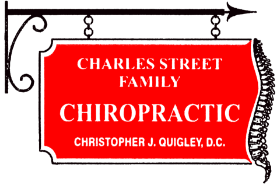Disc Herniations and Low Back Pain Post Chiropractic Care
88% of patients reported continued improvement at 1 year post-care
By Mark Studin DC, FASBE(C), DAAPM, DAAMLP Robert Reiss DC
- According to Hoy et. al. (2010),”Out of all 291 conditions studied in the Global Burden of Disease 2010 Study, LBP [low back pain] ranked highest in terms of disability (YLDs), and sixth in terms of overall burden (DALYs)…
- LBP causes more global disability than any other condition” (p. 968).
- Low back pain is one of the most common maladies among the general population and
- the incidence of occurrence was reported by Ghaffari, Alipour, Farshad, Yensen, and Vingard (2006) to be between 15% and 45% yearly.
- Hoiriis et al. (2004) reported it to be between 75% and 85% over an adult lifetime in the United States.
- Chou (2010) wrote that, “Back pain is the fifth most common reason for office visits in the US, and the second most common symptomatic reason…” (p. 388).
There are many treatment options available that fall into one of two categories, surgical or conservative care. Spinal manipulation/adjustments are one of the most widely used conservative treatment options with doctors of chiropractic performing the majority of them. There have been various studies comparing the effectiveness of spinal manipulative therapy (SMT) on low back pain (LBP) patients with disc herniations to other therapies, all of which have been inconclusive.
But now, a 2014 study by Leemann, Peterson, Schmid, Anklin, and Humphreys concluded that, “a large percentage of acute and importantly chronic lumbar disc herniation patients treated with high-velocity, low-amplitude side posture SMT reported clinically relevant “improvement” with no serious adverse events” (p. 162). The study’s purpose was to evaluate patients with low back pain and leg pain that was the result of a herniated lumbar disc which had been confirmed by magnetic resonance imaging. The patients were treated with high-velocity, low-amplitude spinal manipulations by chiropractors. The patients’ outcomes of self-reported global impression of change and pain levels were collected at various time points up to 1 year.
The results showed significant improvement for all outcomes at all of the time points. “Patients responding ‘better’ or ‘much better’ were categorized as ‘improved,’ and all other patients as ‘not improved.’ ‘Improved’ was the primary outcome measure. ‘Slightly improved’ was not considered clinically relevant improvement” (Leemann et al., 2014, p. 158). At 1 year, 88.0% were much better or better. According to the authors, “The results in this current study are encouraging when considering that it is chronic LBP patients who are a large economic burden with greater use of prescription medications and increased use of other health care resources” (Leemann et al., 2014, p. 161).
References:
3. Hoiriis, K. T., Pfleger, B., McDuffie, F. C., Cotsonis, G., Elsangak, O., Hinson, R., & Verzosa, G. T. (2004). A randomized clinical trial comparing chiropractic adjustments to muscle relaxants for subacute low back pain. .Journal of Manipulative and Physiological Therapeutics, 27(6), 388-398.
4. Chou, R. (2010). Pharmacological management of low back pain. Drugs, 70(4), 387-402.
5. Leemann, S., Peterson, C. K., Schmid, C., Anklin, B., & Humphreys, B. K. (2014). Outcomes of acute and chronic patients with magnetic resonance imaging-confirmed symptomatic lumbar disc herniations receiving high-velocity, low-amplitude, spinal manipulative therapy: A prospective observational cohort study with one-year follow-up. Journal of Manipulative and Physiological Therapeutics, 37(3), 155-163.
